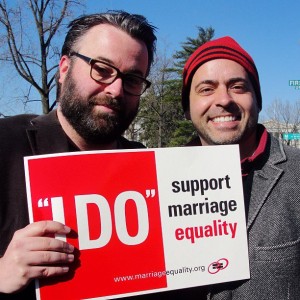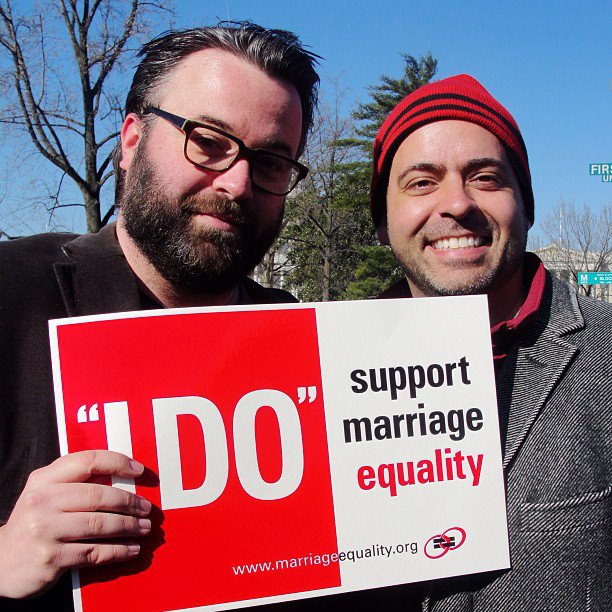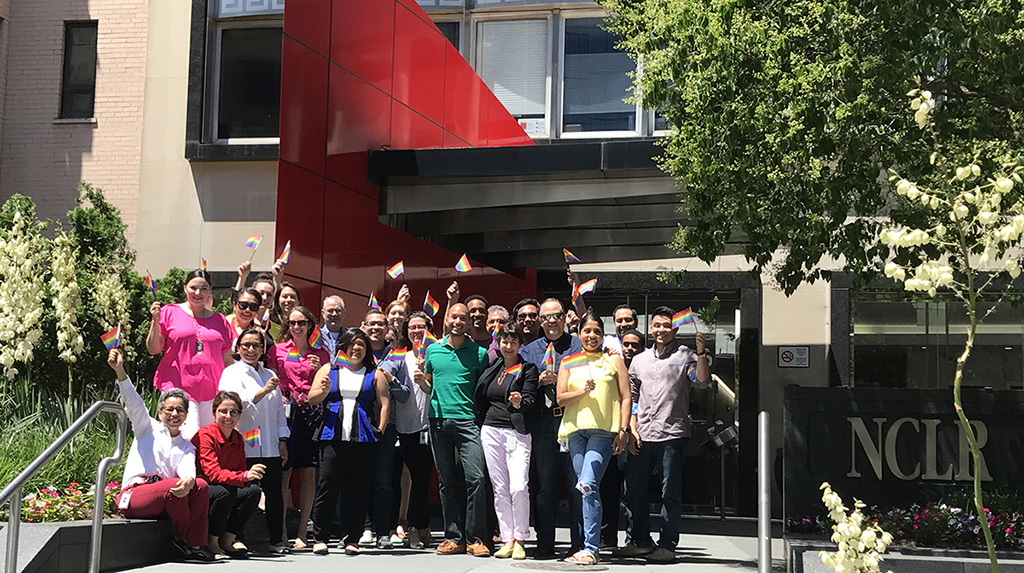Where Does the Supreme Court Go Next With Marriage Equality?
 This past week was a historic time for civil rights in this country. Up for consideration before the Supreme Court were two landmark cases—each with the potential to define the contours of marriage in this country for years to come. There was dense discussion of case law, legal procedure, and even a question of whether or not the right people were present to defend Proposition 8 (Perry) and the Defense of Marriage Act (DOMA) (Windsor). But at their heart, both the Perry and the Windsor cases come down to a couple simple propositions: 1) whether a person in this country is allowed to marry the person they want to and 2) whether the federal government will recognize all legal marriages in this country.
This past week was a historic time for civil rights in this country. Up for consideration before the Supreme Court were two landmark cases—each with the potential to define the contours of marriage in this country for years to come. There was dense discussion of case law, legal procedure, and even a question of whether or not the right people were present to defend Proposition 8 (Perry) and the Defense of Marriage Act (DOMA) (Windsor). But at their heart, both the Perry and the Windsor cases come down to a couple simple propositions: 1) whether a person in this country is allowed to marry the person they want to and 2) whether the federal government will recognize all legal marriages in this country.
Increasingly, this doesn’t seem to be a question for many Americans. A 2013 CBS News poll in late March found that more than one-half (53%) of Americans support same-sex marriage. Polls of Latinos show the very same or higher levels of support, including a Pew poll, which found that 52% of Hispanics support same-sex marriage. Yet, for the justices who are now deliberating on these questions, it is still unclear, even to the seasoned court observer, what they will decide. We now enter the ultimate waiting game. Decisions are expected at the end of the Court’s term in late June.
Keep up with the latest from UnidosUS
Sign up for the weekly UnidosUS Action Network newsletter delivered every Thursday.
So what are the possibilities? Here are some prominent scenarios to consider.
In Perry, the Court addresses the broader question of who gets to marry. The Court could decide the case in a multitude of ways, such as they did, but here are some of the possibilities to consider.
1. The Supreme Court could decide that the proponents of Proposition 8 are not permitted to defend the law in court because of their lack of “standing” and therefore not even reach the issue in this case. If that happened, then the last original decision in the trial court striking down Proposition 8 would remain in place. The state of California could again direct counties to issue marriage licenses to same-sex couples. It would not, however, address same-sex marriage beyond California.
2. The Court could also find a federal constitutional violation, striking down Proposition 8 and, potentially, all other restrictions on the right of same-sex couples to marry across the country.
3. The Court could strike down Proposition 8, focusing on the circumstances of California. One approach would be to invalidate Proposition 8 and other marriage bans in states like California that provide all the rights and benefits of marriage under state law through civil unions or domestic partnerships. (When Colorado’s civil union’s law goes into effect on May 1, there will be nine such states.) Essentially, the Court could conclude that those states can’t have “separate but equal” systems where same-sex couples and opposite-sex couples have different types of unions, but similar or the same rights.
4. The Court could decide that Proposition 8 does not violate the Constitution, leaving the rules in place for California, but also leaving it the same in other places. In that case, marriage equality would remain reality in those nine states and the District of Columbia, but the bans in California and other states would also remain in place.
In Windsor, the court will decide whether DOMA, which only recognizes marriage between a woman and a man, is constitutional. At minimum well over 1,000 federal rights and protections for same-sex couples are at stake because their commitment is not recognized. Based on the oral arguments, there are several the Court should consider.
1. Similar to Perry, the Court may not make a decision on the actual issue, determining that there is no dispute they can review in the case, because both Edie Windsor (the plaintiff) and the United States government agree that DOMA is unconstitutional. If it does so, the lower court’s decision in this case is invalidated, meaning that Edie Windsor would prevail in her own case but there would be no broader resolution on the constitutionality of DOMA.
2. The Court could uphold DOMA, meaning no change in status for same-sex marriage couples.
3. The Court could strike down DOMA, meaning couples would be entitled to federal marriage benefits wherever they can legally marry.
In the end, there are a multitude of possible outcomes of the cases. But for anyone who has been following this issue on or off the court steps, we know that in the eyes of most Americans the decision has already been made. Support of marriage equality has been growing over the last decade and people realize that you cannot choose who you fall in love with. That is why these decisions are so fundamental to our rights; they are something that never goes away, no matter what a court decides.


